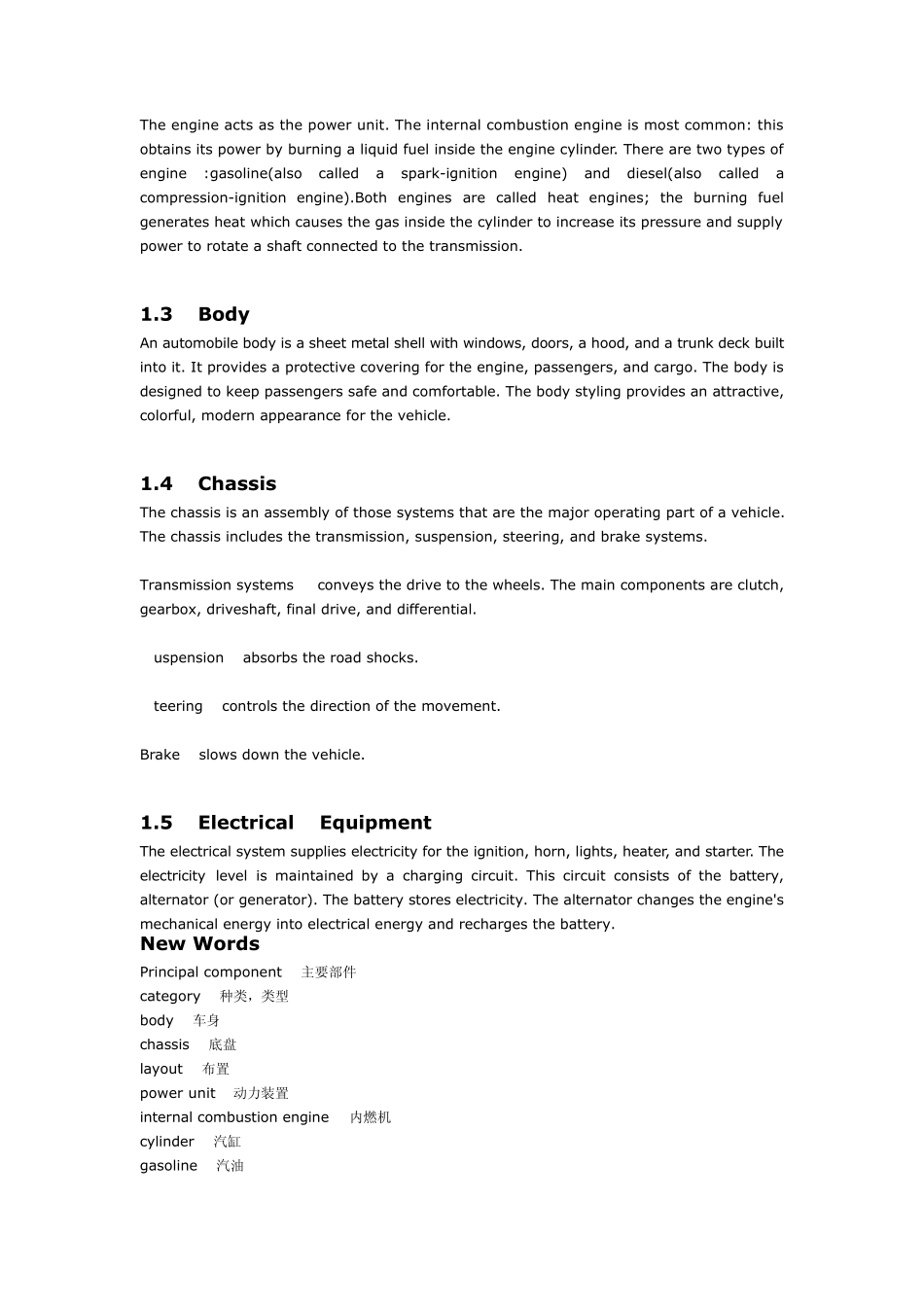汽车构造英文版-免费下载版 CHAPTER 1 AUTOMOTIVE BASICS 1.1 Principal Components Today's average car contains more than 15,000 separate, individual parts that must work together. These parts can grouped into four major categories: engine, body, chassis and electrical equipment. 1.2 Engine The engine acts as the power unit. The internal combustion engine is most common: this obtains its power by burning a liquid fuel inside the engine cylinder. There are two types of engine :gasoline(also called a spark-ignition engine) and diesel(also called a compression-ignition engine).Both engines are called heat engines; the burning fuel generates heat which causes the gas inside the cylinder to increase its pressure and supply power to rotate a shaft connected to the transmission. 1.3 Body An automobile body is a sheet metal shell with windows, doors, a hood, and a trunk deck built into it. It provides a protective covering for the engine, passengers, and cargo. The body is designed to keep passengers safe and comfortable. The body styling provides an attractive, colorful, modern appearance for the vehicle. 1.4 Chassis The chassis is an assembly of those systems that are the major operating part of a vehicle. The chassis includes the transmission, suspension, steering, and brake systems. Transmission systems ― conveys the drive to the wheels. The main components are clutch, gearbox, driveshaft, final drive, and differential. Suspension― absorbs the road shocks. Steering― controls the direction of the movement. Brake― slows down the vehicle. 1.5 Electrical Equipment The electrical system supplies electricity for the ignition, horn, lights, heater, and starter. The electricity level is maintained by a charging circuit....


